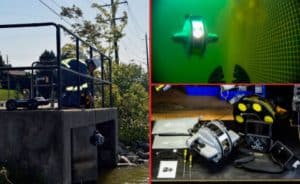Consumer Tablets for Mobile Mapping
We are often asked for recommendations on which consumer tablets are best for field data collection with apps such as Collector, Survey123 or TerraFlex. We won’t be recommending any one tablet in this article but will give suggestions on specs to consider before purchasing.

Operating System
Most apps cover multiple platforms to include iOS, Android, and Windows which gives you a vast array of tablets to choose from. Slimming down the choices between operatiing systems usually depends on preference. Another factor that plays a key role is how else you will utilize the tablet? Most people want to go with iOS and Android tablets due to their relative affordability, but Windows tablets are getting cheaper and can be more versatile. Windows tablets can allow you to run software while you’re in the field that you would normally need to go back to the office to utilize.
Many of you will be connecting an external receiver to your consumer device to get high accuracy. Some receivers will cover multiple platforms like Trimble’s R1, R2, and R10 receivers, but other receivers such as Trimble’s Catalyst or Juniper’s Geode are currently only compatible with Android operation systems. External receivers may have their own app for configuring the receiver.
Each software will have a minimum operating system version required. You can usually find this info by Googling the app’s system requirements. Here are some quick links for Collector for ArcGIS, Collector Classic, Survey123, Catalyst and TerraFlex. As apps are developed, the lower operating system version may be dropped, so consider getting a newer operation system. It will extend the life of the system in the long run.
RAM and Processor
Cheap consumer devices, for the most part, will not have a large RAM size or a fast processor. This may limit what apps you can run, make the app slow to respond, or cause apps to crash.
The apps will have system requirement information that will give you a minimum RAM version and/or processor that is required to utilize their app. If you will Bluetooth to other devices or run multiple app simultaneously, consider getting a RAM size above the minimum requirement.
Screen
Consumer devices, for the most part, are built for indoor use which can make viewing the screen outdoors difficult. Adjusting the backlight or getting an anti-glare screen protector can improve this.
Screen size is another way to filter down your choices. Larger screens will obviously allow you to view more of your map but will be clunkier to carry around. Small screen devices are efficient for carrying around but won’t have the same map viewing capabilities.
Battery life
Few consumer tablets currently on the market have a user replaceable battery. Constantly being connected to the GPS receiver, whether internally or externally, will drain the battery faster on any type of device. Bluetooth connections to external receivers and running multiple apps will also increase the rate of battery depletion. Checking the battery life rating on the tablet is another spec to consider. If the battery life doesn’t last the whole day, you may want to check out accessories such as a car charger or external battery pack that can be used as a backup to get through the day.
Ruggedized
Field work is often dirty and not always done in optimal weather conditions. Some tablets will have cases that will increase their ruggedness and resistance to weather conditions. If you will be collecting data consistently in rough terrain or conditions, you may want to consider going a step up from consumer devices as many hardware manufactures, such as Trimble and Juniper, have ruggedized tablet options.










